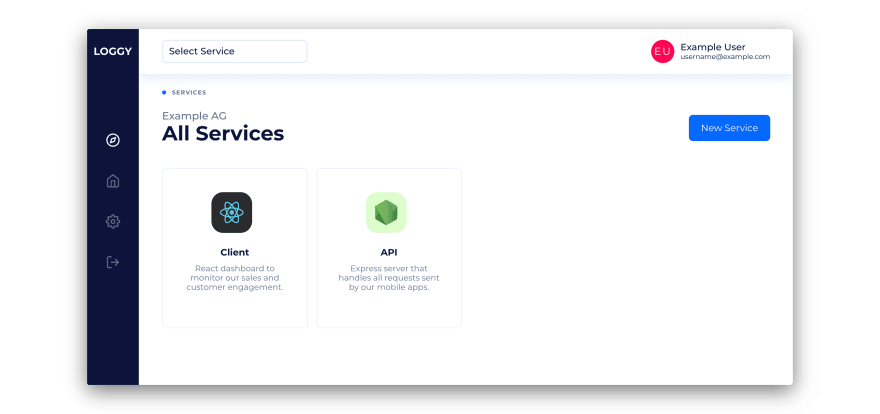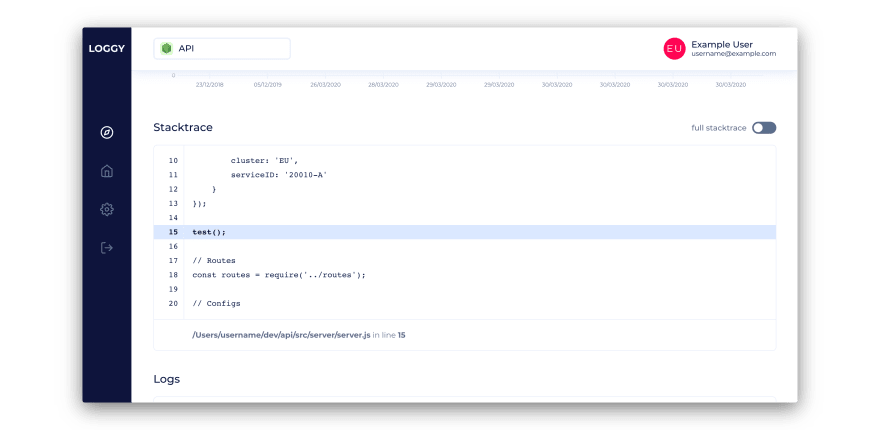I built an entire monitoring service while being in Covid-19 quarantine 📈🚀

Timo Zimmermann
Posted on April 2, 2020

After reading posts here for several years now, I decided to write my first one too. 😀 I hope everyone is doing fine in the current situation. For my part, I've been in quarantine for around two and a half weeks now. To use my time productively, I decided to create an app called LOGGY that monitors different kinds of web services and catches errors in production.
There are already several monitoring services, but I wanted to see what I can come up with within just two weeks. My goal was to create a highly scalable and flexible service that is easy to deploy. I decided to write the backend in Go to learn the language a bit better. I also believe that Go is quite a powerful tool for these type of applications. The frontend is written in React.
To get started there needs to be at least one service. A service can be anything like an Express server, a mobile app or your frontend. All services belong to an organization. Admins of that organization are able to invite and remove additional users to their organization. There are also adapters that can be installed on the service, to automatically catch and report errors. It also gives you the flexibility to write your own adapter and error reporting logic in whatever language you prefer.
When selecting a service, it shows all the errors that were reported by that particular service with a couple of details. Each service has a so-called ticket, which is used to assign the reported event to the service.
You can click on an error for further insights. It is also possible to add custom information to the event, which can be handy if you, for example, run your service in different clusters and want to add the name of the cluster to the event.
It will also give you detailed information when and how often the error was reported.
Besides the raw stack trace, it will show clearly where the error occurred. Furthermore, you will see previous console logs and information about the adapter.
If you want to check it out, you can create your own organization on a demo instance I deployed here and give it a try. Currently, there is a NodeJS adapter available and I'm already working on an adapter for common frontend frameworks. In the repositories, you will find information on how to create an adapter in any other language or host the service yourself.
Thanks for reading 🙏🏼

Posted on April 2, 2020
Join Our Newsletter. No Spam, Only the good stuff.
Sign up to receive the latest update from our blog.








